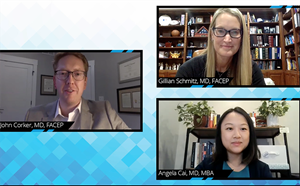
Opioid Bill Passes: How will this affect EM physicians?
By Jessica Best, MS, MD, Chair of YPS
The Substance Use-Disorder Prevention that Promotes Opioid Recovery and Treatment for Patients and Communities Act was signed into law on October 24, 2018. There are a few key pieces of this bill that hopefully will help decrease opioid-related deaths and better assist those with opioid addiction.
ACEP developed the first two acts below that are part of the legislative package with the sponsoring members of Congress, but all of the following are relevant to physicians:
- The Preventing Overdoses While in Emergency Rooms (POWER) Act offers grants to initiate medication-assisted treatment protocols in the emergency department in conjunction with counseling and behavioral therapies.
- Alternatives to Opioids (ALTO) in the Emergency Department Act offers grants to start a three-year trial program to study alternative pain management protocols and treatments, limiting opioid therapy in the ED.
- Increasing Treatment facilities and community resources authorizes a grant program through the Substance Abuse and Mental Health Services Administration (SAMHSA) to allow organizations to develop opioid recovery centers in a community. It also authorizes HHS to develop grants to support people who are in recovery transition to independent living and jobs.
- Less restrictions on medication-assisted treatment: In order to prescribe medication-assisted treatment (MAT) (methadone, extended-release naltrexone, and buprenorphine) to those patients suffering from opioid addiction you have to obtain a waiver from SAMHSA. Physicians will take an 8-hour course, and their new DEA number will now have an X designating you can write for these specific medications. Previously there was a cap on how many patients a physician could prescribe medications (like a buprenorphine cap of 100 patients). This cap has been increased to 275 to aid in the number of patients one physician can have in a drug treatment program. Previously, buprenorphine prescribing authority for nurse practitioners and physician assistants was limited to five years (ending in 2021), but now it will be permanent.
- First responders will now carry naloxone. This will include police and fire fighters, who may be on scene before medical personnel.
- Lifting some restrictions on reimbursement: Medicare and Medicaid are currently very limited on reimbursement for addiction treatment. The bill serves to expand more coverage for inpatient treatment facilities, as well as medication coverage.
These are just a few of the pieces of the SUPPORT Act. Although many physicians may not see changes to their hospital policy or community resources for some time, hopefully the grant money will help us come up with solutions to the opioid crisis. The act brings to mind a couple of interesting questions for physicians:
- If we develop programs to start medication-assisted treatment (MAT), will physicians be required to complete the SAMHSA waiver?
- If our facilities become required to start patients on an opioid treatment program, how hard will it be to establish follow-up for these patients? Will the new drugs of abuse stem from those looking for MAT in the ED?




